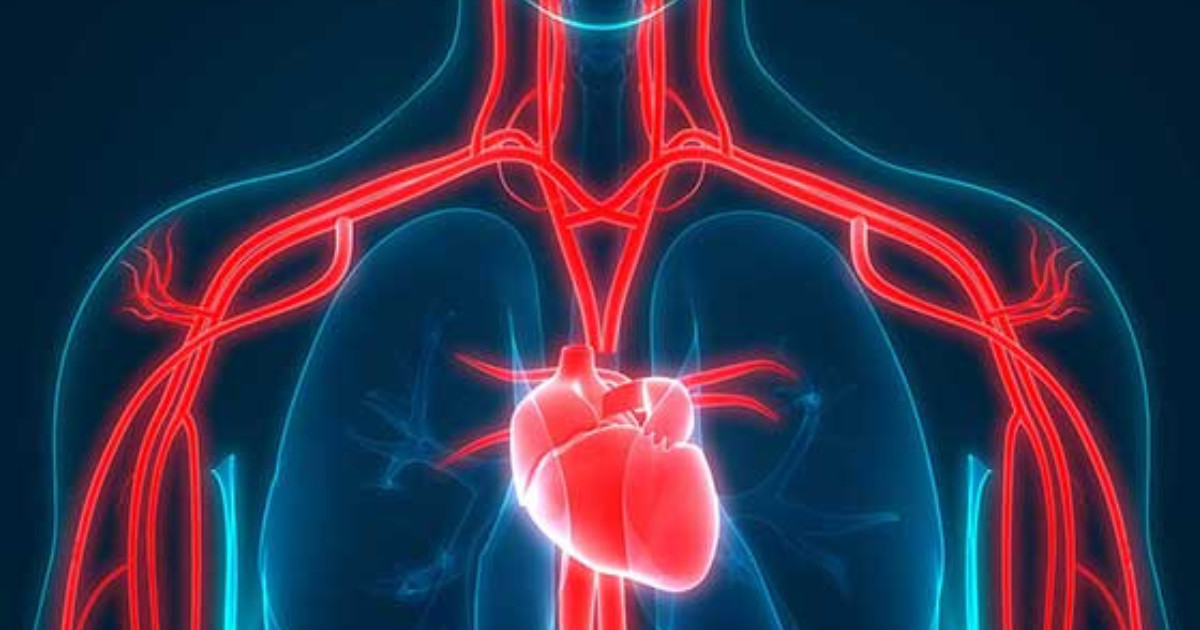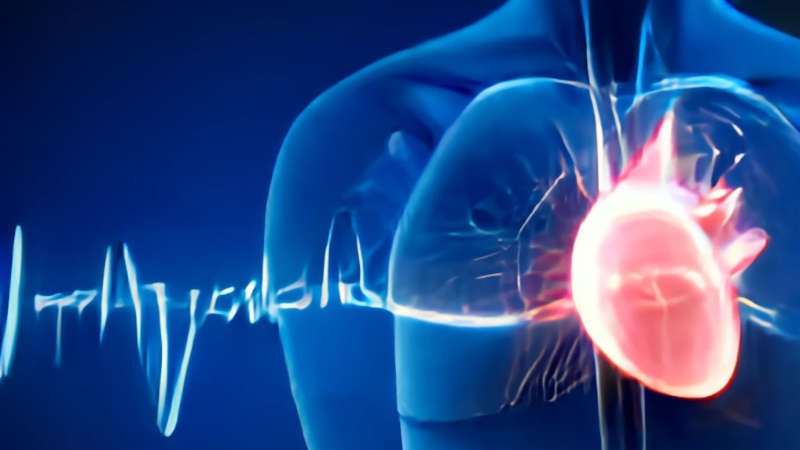The terms ‘Acquired Heart Disease’ and ‘ Congenital Heart Disease’ as referenced in the previous article that looked at active heart disease cover how heart disease is known to manifest in the human body.
For the sake of clarity, we will dig deeper into both of these and also take a look at some associated conditions.
Table of Contents
Acquired Heart Disease
Acquired heart disease refers to heart conditions that develop over time, as opposed to being present at birth. Some common types of acquired heart disease include coronary artery disease, heart valve problems, and cardiomyopathy.
Coronary artery disease is a condition in which the arteries that supply blood to the heart become narrowed or blocked, reducing the amount of oxygen and nutrients that reach the heart muscle. This can lead to chest pain (angina) and, in severe cases, heart attack.
Heart valve problems occur when one of the valves that regulate the flow of blood through the heart becomes damaged or diseased. The result may be that there are complications where blood flow is irregular and this may lead to heart failure.
Cardiomyopathy is a general term for a variety of conditions that affect the heart muscle. These conditions can cause the heart muscle to become weak, enlarged, or stiff, and can lead to heart failure.
Acquired heart disease can be caused by a variety of factors, including high blood pressure, high cholesterol, smoking, obesity, diabetes, and a sedentary lifestyle. It is important to adopt a healthy lifestyle and follow the recommendations of a healthcare provider to reduce the risk of developing acquired heart disease.
Congenital Heart Disease
Congenital Heart Disease (CHD) refers to conditions that affect the heart and blood vessels present at birth. These conditions can be caused by genetic factors or problems with fetal development.
There are many different types of CHD, ranging from relatively mild conditions that may not require treatment to severe conditions that can be life-threatening. CHDs commonly include:
- Atrial septal defect (ASD)
- This is a hole in the wall that separates the two upper chambers of the heart. This can allow blood to flow between the two chambers and may lead to an abnormal heart rhythm or heart failure. 1
- Ventricular septal defect (VSD)
- This is a hole in the wall that separates the two lower chambers of the heart. This can allow blood to flow between the two chambers and may lead to an abnormal heart rhythm or heart failure. 2
- Patent ductus arteriosus (PDA)
- This is a condition in which a blood vessel that should close after birth remains open, allowing blood to flow between the aorta and the pulmonary artery. This can cause an abnormal heart rhythm or heart failure. 3
- Coarctation of the aorta
- This is a condition in which the aorta, the main blood vessel that carries oxygenated blood from the heart to the rest of the body, is narrowed. This can cause high blood pressure and may lead to heart failure. 4
- Tetralogy of Fallot
- This is a combination of four heart defects that can cause a lack of oxygen in the blood and may lead to heart failure. 5
Treatment for CHD may involve medications, surgery, or other procedures to correct the underlying problem and improve heart function.
In some cases, ongoing medical care may be needed to manage the condition. It is important to work closely with a healthcare provider to develop a treatment plan that is appropriate for the specific condition.
What are the most Common Heart Muscle Problems?
There are several common heart muscle problems, also known as cardiac muscle disorders. These include:
- Cardiomyopathy
- Coronary Artery Disease (CAD)
- Heart valve problems
- Heart muscle inflammation
- Heart muscle damage due to drug use
It is important to see a Doctor if you are experiencing symptoms such as chest pain, difficulty breathing, or fatigue, as these may be signs of a heart muscle problem.

Early diagnosis and treatment can help to manage the condition and reduce the risk of complications.
What is Cardiomyopathy?
Cardiomyopathy is a general term for a variety of conditions that affect the heart muscle. These conditions can cause the heart muscle to become weak, enlarged, or stiff, and can lead to heart failure.
There are several types of cardiomyopathy, including:
- Dilated cardiomyopathy
- This is the most common type of cardiomyopathy. It occurs when the heart muscle becomes stretched and thin, causing the chambers of the heart to become enlarged. This can lead to a decrease in the heart’s ability to pump blood effectively and may lead to heart failure. 6
- Hypertrophic cardiomyopathy
- This type of cardiomyopathy occurs when the heart muscle becomes thickened, causing the heart to become stiff and less able to relax between beats. This can lead to a decrease in the heart’s ability to fill with blood and may lead to heart failure. 7
- Restrictive cardiomyopathy
- This type of cardiomyopathy occurs when the heart muscle becomes stiff and inflexible, making it difficult for the heart to fill with blood. This can lead to a decrease in the heart’s ability to pump blood effectively and may lead to heart failure. 8
- Arrhythmogenic right ventricular cardiomyopathy (ARVC)
- This type of cardiomyopathy is characterised by a progressive loss of heart muscle in the right ventricle and an increase in fat and scar tissue. This can lead to an abnormal heart rhythm and may increase the risk of sudden cardiac arrest. 9
Cardiomyopathy can be caused by a variety of factors, including genetic factors, viral infections, alcoholism, uncontrolled high blood pressure, and certain medications.
What is Coronary Artery Disease (CAD)?
Coronary artery disease (CAD) is a condition in which the arteries that supply blood to the heart become narrowed or blocked, reducing the amount of oxygen and nutrients that reach the heart muscle. This can lead to chest pain (angina) and, in severe cases, heart attack.
CAD is caused by a buildup of plaque, a waxy substance made up of cholesterol, fat, and other substances, in the walls of the coronary arteries. 10
Plaque can narrow the arteries and reduce blood flow to the heart. If a piece of plaque breaks off and becomes stuck in a smaller artery, it can completely block blood flow and cause a heart attack.
Risk factors for CAD include high blood pressure, high cholesterol, smoking, obesity, diabetes, a sedentary lifestyle, and a family history of CAD. Symptoms of CAD may include chest pain, shortness of breath, and fatigue. 11
Treatment for CAD may involve lifestyle changes, such as adopting a healthy diet and engaging in regular physical activity, as well as medications to lower blood pressure and cholesterol.
In some cases, procedures such as angioplasty (to open a blocked artery) or coronary artery bypass surgery (to bypass a blocked artery) may be necessary. It is important to work closely with a healthcare provider to develop a treatment plan that is appropriate for your specific needs.
What is Heart Valve Problems?
Heart valve problems are conditions that affect the four valves in the heart that help to regulate the flow of blood through the heart and into the rest of the body. These valves include the aortic, mitral, tricuspid, and pulmonary valves.
Heart valve problems can be either acquired or congenital. Acquired heart valve problems develop over time and can be caused by a variety of factors, such as infections, autoimmune diseases, and the natural aging process.
Congenital heart valve problems are present at birth and can be caused by genetic factors or problems with fetal development. 12
Heart valve problems can cause problems with blood flow and may lead to heart failure. Symptoms of heart valve problems may include chest pain, shortness of breath, and fatigue.
Treatment for heart valve problems may involve medications to improve heart function and control symptoms, as well as procedures such as valve repair or valve replacement surgery to correct the underlying problem.
What is Heart Muscle Inflammation?
Heart muscle inflammation, also known as myocarditis, is a condition that occurs when the heart muscle becomes inflamed. This can cause the heart muscle to become weak and may lead to heart failure.
Heart muscle inflammation can be either acquired or congenital. Acquired heart muscle inflammation occurs after birth and can be caused by a variety of factors, such as viral infections, autoimmune diseases, and certain medications. 13
Like with Heart Valve Problems, where congenital heart muscle inflammation is present at birth this is for life in the vast majority of cases. It is typically the result of any number of genetic factors or problems that arise during fetal development.
Symptoms of heart muscle inflammation may include chest pain, shortness of breath, and fatigue. In severe cases, heart muscle inflammation may cause an abnormal heart rhythm or heart failure.
Treatment for heart muscle inflammation may involve medications to reduce inflammation and improve heart function, as well as procedures such as heart surgery to repair or replace damaged heart tissue.
In some cases, ongoing medical care may be needed to manage the condition.
How to Maintain a Healthy Heart with 6 Easy Tips

As much as this might sound like it is the same old same, there is a good reason why the suggestions below support good heart health; they work.
Here are some tips you can use to maintain a healthy heart:
- Eat a healthy diet
- A diet that is low in saturated and trans fats, salt, and added sugars and high in fruits, vegetables, and whole grains can help to maintain a healthy weight and blood pressure, which are important for heart health. Getting the right balance of minerals in your diet is key here.
- Exercise regularly
- Engaging in regular physical activity can improve heart health and reduce the risk of heart disease. The American Heart Association recommends about 150 minutes of moderately intense aerobic activity or 75 minutes of vigorously intense activity for adults every week.
- Avoid tobacco
- Smoking and using tobacco products can damage the heart and increase the risk of heart disease. Quitting smoking can help to reduce this risk.
- Control chronic conditions
- Chronic conditions such as high blood pressure, high cholesterol, and diabetes can increase the risk of heart disease. Working with a healthcare provider to manage these conditions can help to reduce the risk.
- Get regular check-ups
- Seeing a healthcare provider regularly for check-ups and screenings can help to identify any potential problems early on and allow for early treatment.
- Focus on stress management
- Chronic stress can have real impacts on the heart, so it is important to apply healthy approaches to managing stress, such as through relaxation techniques, exercise, or therapy.
You might find the following articles have some value here:
By following these steps, you can help to maintain a healthy heart and reduce the risk of heart disease.
FAQs
What are the 5 main types of Congenital Heart Disease (CAD)?
The 5 main types of CAD include Atrial Septal Defect (ASD), Ventricular Septal Defect (VSD), Patent Ductus Arteriosus (PDA), Coarctation of the Aorta, and Tetralogy of Fallot.
What is congenital heart disease?
Congenital heart disease refers to conditions that affect the heart and blood vessels present at birth. These conditions can be caused by genetic factors or problems with fetal development.
There are many different CHDs. Depending upon the type of congenital heart disease, they can range from relatively mild conditions that may not require treatment to severe conditions that can be life-threatening.
What is the most common Congenital Heart Disease (CHD)?
The most common CHD is a type of heart defect called a septal defect. Septal defects are holes in the walls that divide the heart into chambers. There are two types of septal defects: Atrial Septal Defects (ASDs) and Ventricular Septal Defects (VSDs).
ASDs are holes in the wall that separate the two upper chambers of the heart (the atria). This can allow blood to flow between the two chambers and may lead to an abnormal heart rhythm or heart failure.
VSDs are holes in the wall that separate the two lower chambers of the heart (the ventricles). This can allow blood to flow between the two chambers and may lead to an abnormal heart rhythm or heart failure.
Septal defects are the most common type of CHD, accounting for about 25% of all cases. They can range in severity from small defects that may not require treatment to large defects that can be life-threatening.
What causes Congenital Heart Disease?
Congenital heart disease causes may be the result of a variety of factors from genetics through to fetal developmental problems. Other CHD factors may include a combination of genetic and environmental factors. For example, certain infections or medications during pregnancy may increase the risk of CHD in a child whose parents have a genetic predisposition for the condition.
It is important to note that in many cases, the exact causes of congenital heart disease is not known. Research is ongoing to better understand the factors that contribute to the development of these conditions.
Conclusion
Looking after your heart is largely about lifestyle choices if you do not have preexisting conditions.
Living with CHD can be challenging, but there are steps you can take to manage the condition and maintain a good quality of life. These steps include:
- Follow a treatment plan
- If you have been diagnosed with CHD, it is important to follow the treatment plan recommended by your healthcare provider. This may include medications, procedures, or other medical interventions to improve heart function and control symptoms.
- Take care of yourself
- Adopting a healthy lifestyle can help to manage your condition and reduce the risk of complications. This includes eating a healthy diet, engaging in regular physical activity, avoiding tobacco, and controlling chronic conditions such as high blood pressure and diabetes.
- Know your limits
- It is important to listen to your body and avoid overexerting yourself. Talk to your healthcare provider about any physical activity or other activities you are interested in pursuing and follow their recommendations.
- Stay informed
- Keep track of your condition and be aware of any changes or new developments in treatment options. Ask your healthcare provider any questions you may have about your condition.
- Seek support
- Living with a chronic condition can be emotionally challenging. It can be helpful to seek support from friends, family, and healthcare providers, as well as from support groups for individuals with CHD.
By following these steps, you can help manage your congenital heart disease and maintain a good quality of life.
References
- “Facts about Atrial Septal Defect” CDC, Last Reviewed 24 January 2022 [CDC] [Archive] ↩︎
- “Ventricular septal defect (VSD)” Mayo Clinic Staff, 21 October 2022 [Mayo Clinic] [Archive] ↩︎
- “Patent Ductus Arteriosus (PDA)” American Heart Association Editorial Staff, 23 March 2022 [American Heart Association] [Archive] ↩︎
- “Coarctation of the Aorta HD” Royal Children’s Hospital Staff, Last Checked 27 December 2022 [Royal Children’s Hospital Melbourne] [Archive] ↩︎
- “Tetralogy of Fallot” Mayo Clinic Staff, 17 August 2021 [Mayo Clinic] [Archive] ↩︎
- “Dilated Cardiomyopathy” Cleveland Clinic Staff, 4 July 2022 [Cleveland Clinic] [Archive] ↩︎
- “Hypertrophic Cardiomyopathy (HCM)” National Genetic Heart Disease Registry, Last Checked 27 December 2022 [Australian Genetic Heart Disease Registry] [Archive] ↩︎
- “Restrictive Cardiomyopathy” Pen Medicine Staff, Last Reviewed 8 May 2022 [Penn Medicine] [Archive] ↩︎
- “Arrhythmogenic Right Ventricular Cardiomyopathy (ARVC)” National Genetic Heart Disease Registry, Last Checked 27 December 2022 [Australian Genetic Heart Disease Registry] [Archive] ↩︎
- “Coronary Artery Disease (CAD)” CDC, Last Reviewed 19 July 2021 [CDC] [Archive] ↩︎
- “Established Risk Factors and Coronary Artery Disease: The Framingham Study” P. W. F. Wilson, 1 July 1994 [Oxford Academic] [Archive] ↩︎
- “The developmental genetics of congenital heart disease” B. G. Bruneau, 20 February 2008 [Nature] [Archive] ↩︎
- “The Immune and Inflammatory Basis of Acquired Pediatric Cardiac Disease” E. Jui, K. L. Singampalli, K. Shani, Y. Ning, J. P. Connell, R. K. Birla, P. L. Bollyky, C. A. Caldarone, S. G. Keswani, K. J. Grande-Allen, 27 July 2021 [Frontiers in Cardiovascular Medicine] [Archive] ↩︎
Last Updated on 5 months by D&C Editorial Team


